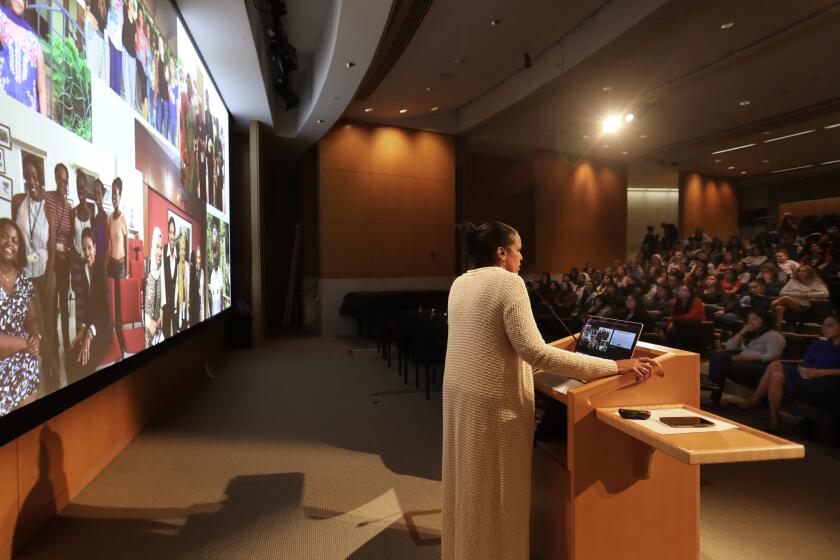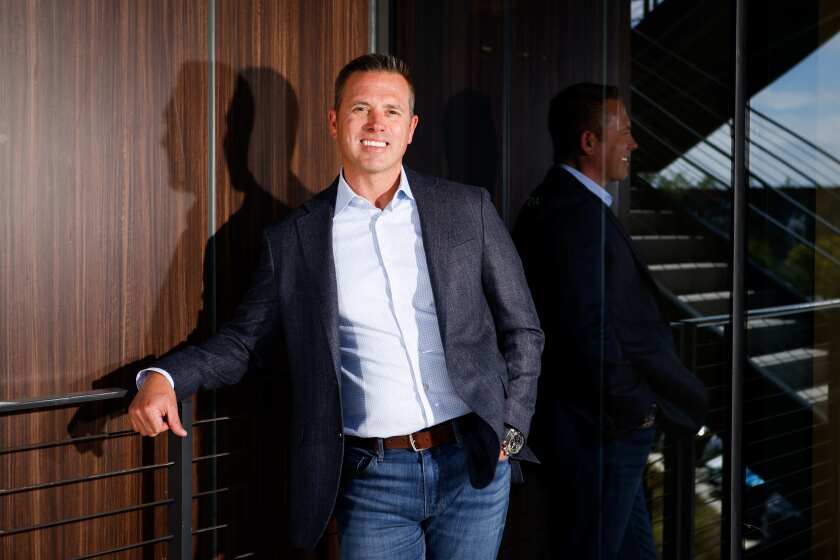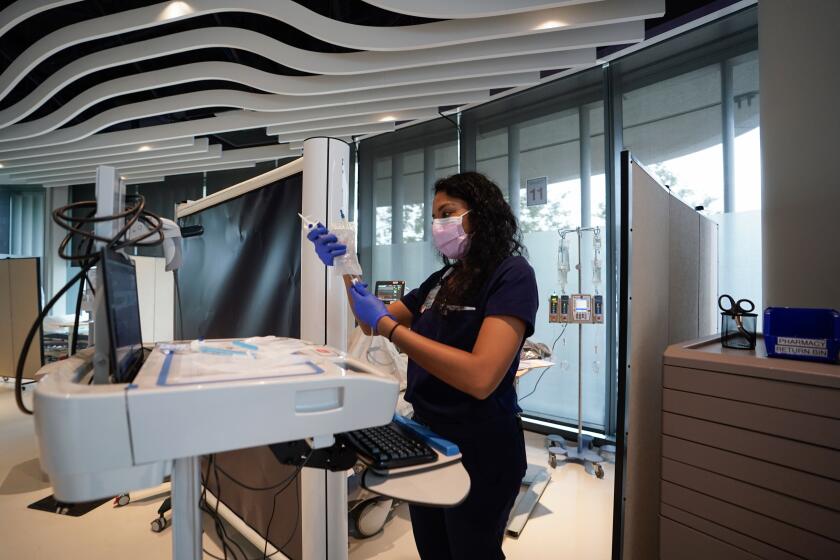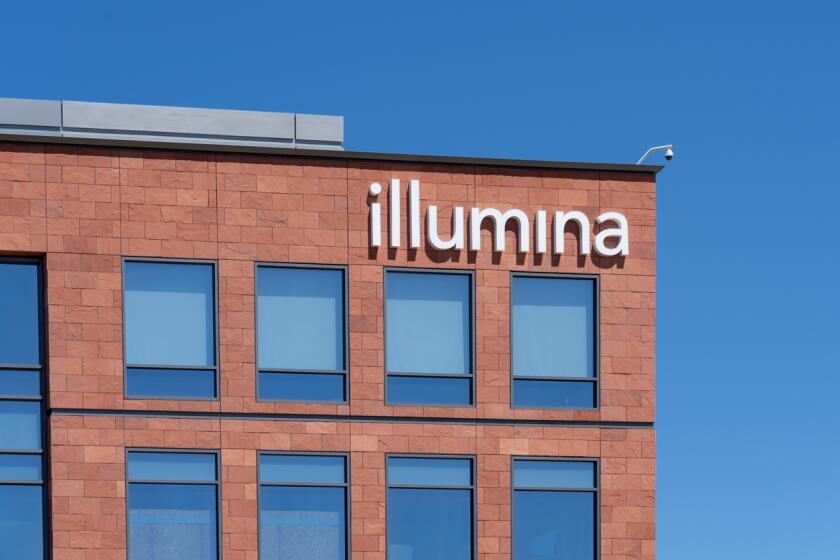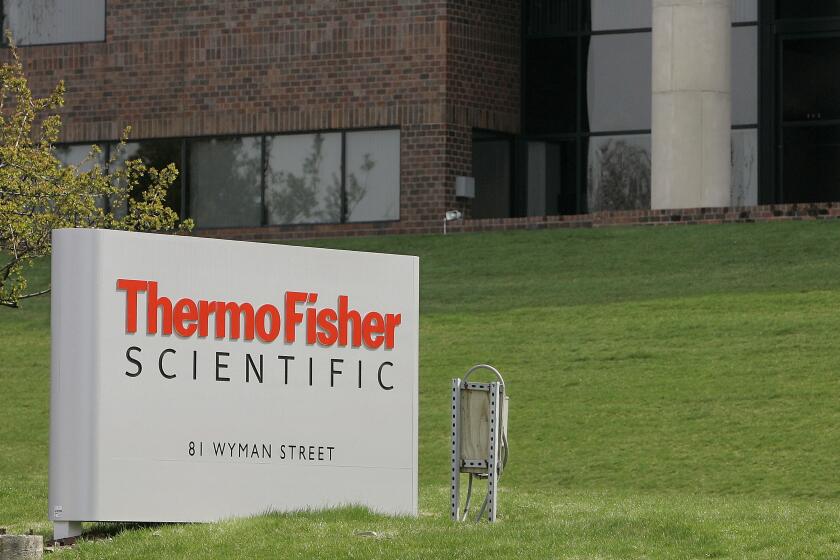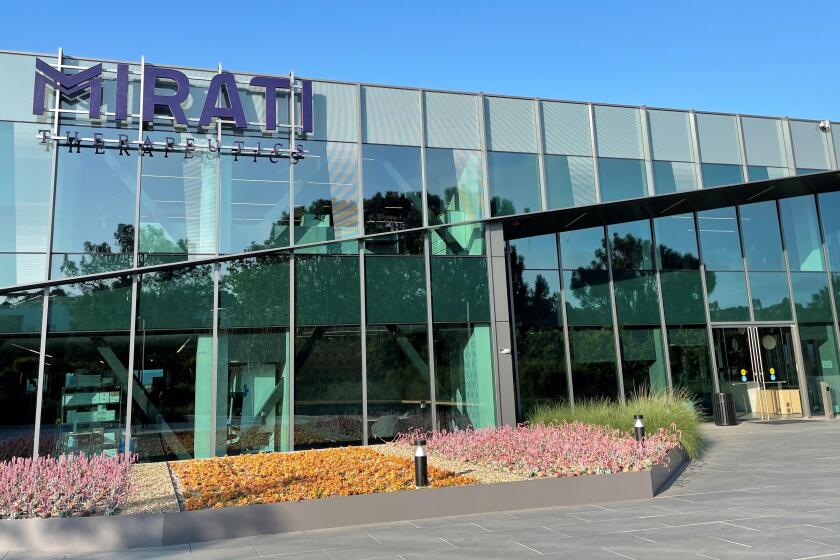For making untreatable disease treatable, Frank Bennett of Ionis shares $3 million Breakthrough Prize
One had the technology. The other had the science. Both shared a mission.
Frank Bennett and Adrian Krainer worked since 2004 to find a treatment for an incurable genetic disease called spinal muscular atrophy. In its most severe form, SMA can kill before the age of 12 months, when the babies lose their ability to breathe.
The collaboration led by Bennett, of Ionis Pharmaceuticals in Carlsbad, and Krainer, of Cold Spring Harbor Laboratory on Long Island, yielded Spinraza, the first drug ever proven effective against the disease.
Bennett and Krainer now share something else: A 2019 Breakthrough Prize in Life Sciences, announced Wednesday. They’ll equally split the $3 million that comes with it — a prize roughly three times that of the Nobel Prize.
Four of these prizes were given for life sciences. Three other $3 million awards were given; two in fundamental physics and one in mathematics.

Bennett, vice president of research at Ionis, said he was “shocked” by the news. He had trouble believing it.
“It took a while to process,” said Bennett, 61.
Spinraza may be just the beginning of a wave of treatments for currently intractable neurological diseases, according to Wednesday’s announcement.
“The work has also paved the way for new therapies ... for Huntington’s, ALS, spinocerebellar ataxias, Parkinson’s and Alzheimer’s — all being developed by Ionis,” the announcement stated.
Spinraza is sold by Ionis partner Biogen of Cambridge, Mass.
The Breakthrough Prize was founded in 2012 by a group of noted technology entrepreneurs. These include Mark Zuckerberg, a Facebook cofounder; Sergey Brin; a Google cofounder; Anne Wojcicki, cofounder of personal genomics company 23andMe, and tech investor Yuri Milner.
Prizes in each field are awarded by a board including some of the founders, assisted by a selection committee composed of previous winners in that field.
The joint award to Bennett and Krainer illustrates that good science alone isn’t enough to yield a breakthrough drug like Spinraza.
Basic academic research must be paired with the expertise of a drug company. That company takes a potential drug through the long path of optimizing it for safety and efficacy, and confirming its safety and effectiveness in cell cultures, in animals and ultimately in people.
Bennett is a busy man: this is just one of his projects. His work includes two other drugs in clinical testing; for ALS, or Lou Gehrig’s disease; and for Huntington’s disease. Both are incurable, neurological diseases that are virtually always fatal.
The Ionis drugs have shown early signs that they’re reaching their targets in ALS and Huntington’s. But it’s too early to tell if the drugs will join Spinraza as breakthrough drugs.
The odds are forbidding. According to a study this year from MIT, only 14 percent of drugs that enter the clinical trial process get approved. And many of these drugs compete with each other, such as the plethora of cholesterol-lowering medicines.
Spinraza isn’t one of those “me-too” drugs. Its approval by the U.S. FDA in December 2016 forever changed the outlook for those born with spinal muscular atrophy, and their families.
Bennett recalls his excitement on hearing the first hints that Spinraza was working in infants with Type 1 spinal muscular atrophy, the severest form. He well knew the disease’s grim natural history.
“Once they’re diagnosed with the disease, they get worse,” Bennett said. “They lose muscle tone and eventually become paralyzed from the disease.
“And we were getting these anecdotes that the drug was making the kids stronger. They were moving around and being able to reach for things, starting to sit, which is never heard of for Type 1 SMA patients.”
Bennett tried to keep his hopes in check, because the first tests were “open-label,” without a placebo control. Later trials included a “sham” injection of the drug, which is given through a lumbar puncture.
As the trials progressed, unmistakable evidence came in: the infants were surviving significantly longer. The effect was so great that the trial was stopped ahead of schedule, and Ionis put all the infants on Spinraza.
The drugs for ALS and Huntington’s disease haven’t reached that point. So far, they have shown early signs that they’re affecting the disease process. But it remains to be seen if they will deliver benefits that merit approval.
Other San Diegans have won Breakthrough Prizes, either collecting the $3 million outright or sharing with a partner. They include:
-- Don Cleveland, a UC San Diego professor who collaborates with Bennett on the ALS drug. Cleveland won one of the five 2018 Breakthrough Prizes in Life Sciences for his work on that disease.
-- Joanne Chory of the Salk Institute won another of the 2018 prizes in Life Sciences for her work in plant science.
-- James McKernan of UCSD shared his award in mathematics equally with collaborator Christopher Hacon of the University of Utah.
-- UCSD’s Napoleone Ferrara received one of the 2013 prizes in Life Sciences for his work at Genentech. This study of how new blood vessels form, or angiogenesis, led to drugs for cancer and eye diseases.
The partnerships begin
Bennett is one of the Ionis team’s longest-serving members. He was personally recruited in the late 1980s by Stanley T. Crooke, Ionis chairman and CEO.
They had originally met at Baylor College of Medicine, where Bennett was a graduate student and Crooke an adjunct professor. Later, when Crooke took a research post at a drug company in Philadelphia, Bennett joined his lab. When Crooke was starting up Ionis, he invited Bennett to join him.
Ionis was then a tiny company, operating out of temporary lab space in Sorrento Valley. Bennett was interested in the potential of Ionis, then called Isis Pharmaceuticals, to invent a new class of drugs called antisense. These drugs alter how genes work by targeting RNA, the messenger molecules made from genes.
There was a more personal motivation: Bennett’s wife, Paula, didn’t like living in Philadelphia.
In San Diego, Bennett met Don Cleveland, who became his collaborator in exploring the potential of antisense therapy for ALS.
Then in 2003 Bennett read a scientific paper by Krainer that described how antisense could change the activity of a gene that codes for a protein that promotes survival of motor neurons. A deficiency in that protein progressively kills these neurons in SMA patients.
This gene became the genetic target for the drug called Spinraza. The concept was to use antisense to change how the gene works, increasing production of this protein.
“I contacted Adrian to see if he’d be interested in collaborating with us,” Bennett said. “Adrian, being an academic, didn’t have an ability to see his ideas get translated to therapies … He had the expertise in the basic science, and we had the expertise in translating that basic science into potential therapeutics.”
Bennett and Krainer discussed a larger-scale partnership with antisense, but eventually decided to narrowly focus on SMA. This program had a clear genetic target and a clear mechanism to affect that target.
“Some of the other projects that we had talked about weren’t quite as well-defined,” Bennett said. “So we felt it was important to establish what the technology could do for a disease.”
Working with patients
As part of his job, Bennett meets with patients and patient groups. He says this helps him personally understand what patients are facing, which informs the goals of drug development.
That patient involvement led Bennett to the Vatican last year, for a historic meeting between Pope Francis with Huntington’s disease patients and advocates.
“It’s similar to SMA as a disease that really motivates you to do what you can for the patients,” Bennett said. “And that’s why I still come to work everyday, is that there’s still a need out there.”
Huntington’s disease is caused by a mutated protein that is needed in the brain during development. This mutated protein becomes toxic, causing gradual and progressive neurodegeneration.
Patients gradually lose muscle control, develop psychiatric symptoms and eventually die. They tend to get the disease in middle age, but the age of onset depends on the severity of the mutation.
Bennett had been invited to the meeting by one of its organizers, Charles Sabine, a Huntington’s disease advocate and former NBC news journalist.
As it turned out, Bennett had a business meeting scheduled in Switzerland just after the event with drug giant Roche, the partner with Ionis in developing the Huntington’s disease drug. So he was able to connect the two trips. But he didn’t travel alone.
“I should highlight that my wife is Catholic, and so when I mentioned that I was going to see the pope, she was coming as well,” Bennett said, laughing.
Pope Francis met with the patients and advocates in the televised event, saying they deserved love and support as a matter of Christian teaching.
“Charles arranged for me to sit up in the VIP session section and I was able to meet the pope as part of that event,” Bennett said.
“It was a life-affirming event. I’m not religious myself, but the pope is clearly somebody who cares about people, and it comes through very strongly. I’ll remember it for the rest of my life.”
One last thing, Bennett said: Patients who took the experimental drug, and their families, deserve the most honor.
“They were very brave to try a very novel therapy for the first time,” he said. “And for the first few patients there was a lot of risk associated with it. We had done all the work that we could to show that it was safe, but you never know when you’re testing a new medicine.
“And so to me, the families that take care of these kids, and the kids themselves, are really the heroes in the story.”
Related reading
From basic research to saving lives — the Spinraza story
Ionis surges on Spinraza sales
Ionis reports continued success testing drug for fatal disease
FDA approves Ionis spinal muscular atrophy drug Spinraza
Designer DNA drugs approach a potential watershed moment
Ionis earns $40 million from spinal muscular atrophy drug Spinraza
Science Playlist

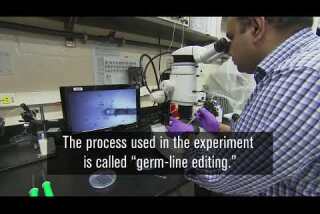
In a first, scientists rid human embryos of a potentially fatal gene mutation by editing their DNA

10 interesting facts about Mars

Kids can add years to your life

LA 90: SpaceX launches recycled rocket

Ocean temperatures warming at rapid rate, study finds
bradley.fikes@sduniontribune.com
(619) 293-1020
Get U-T Business in your inbox on Mondays
Get ready for your week with the week’s top business stories from San Diego and California, in your inbox Monday mornings.
You may occasionally receive promotional content from the San Diego Union-Tribune.


